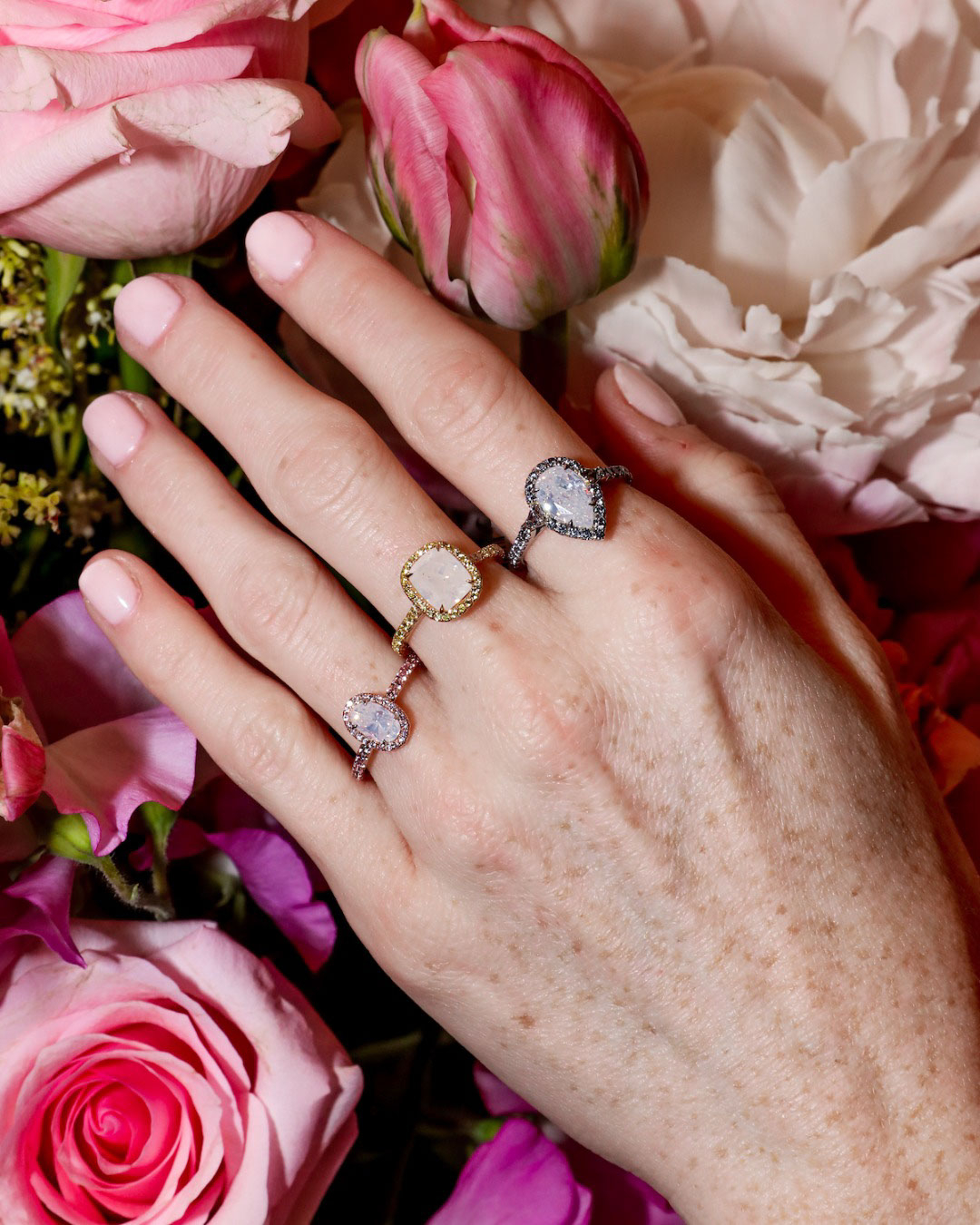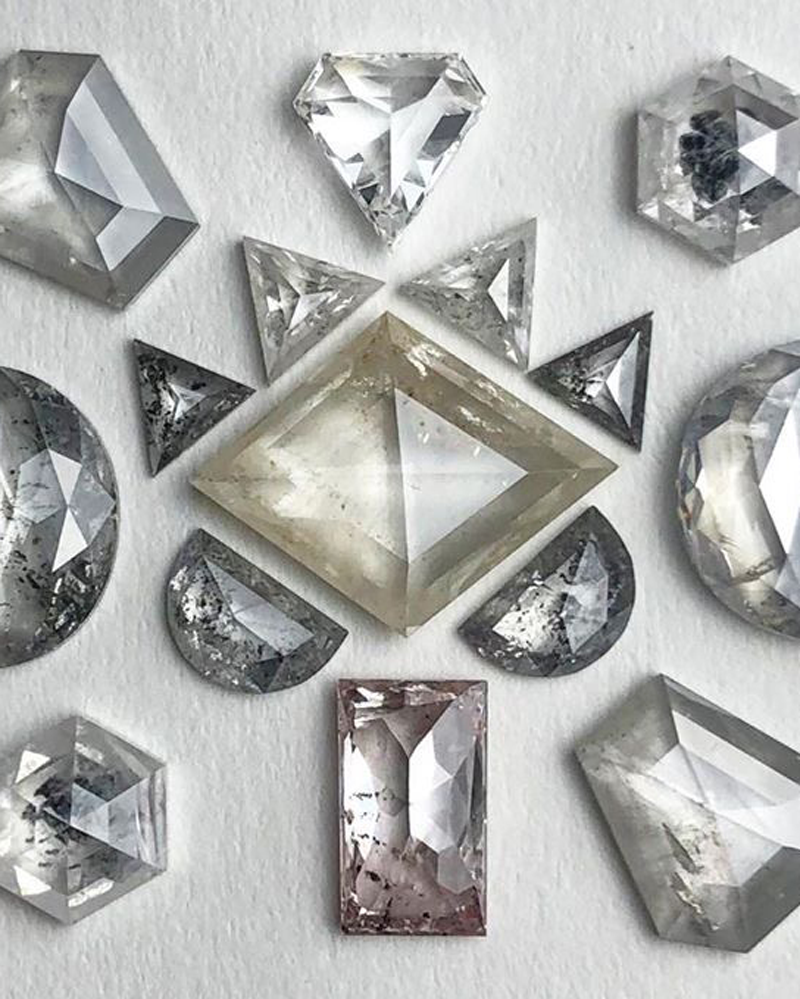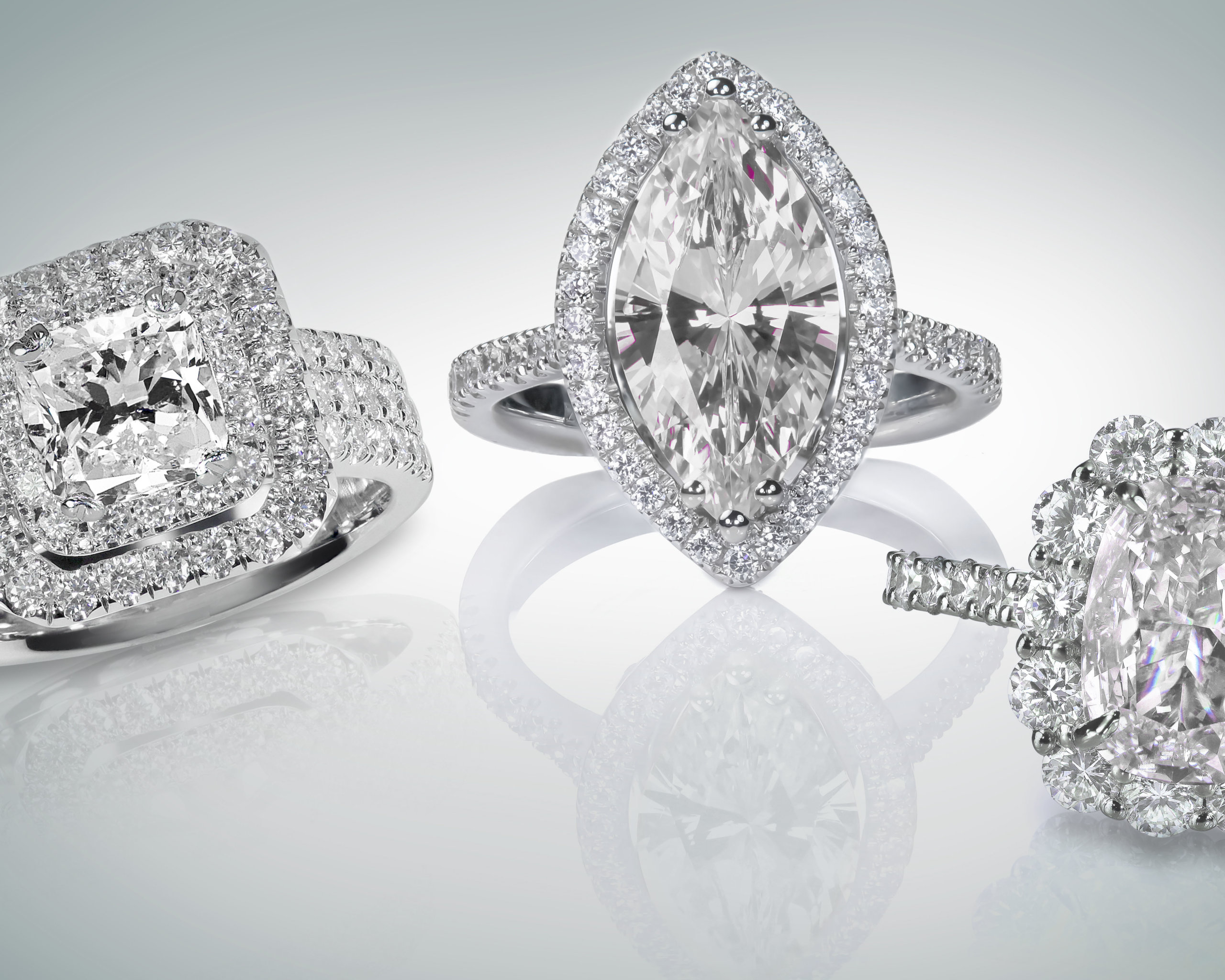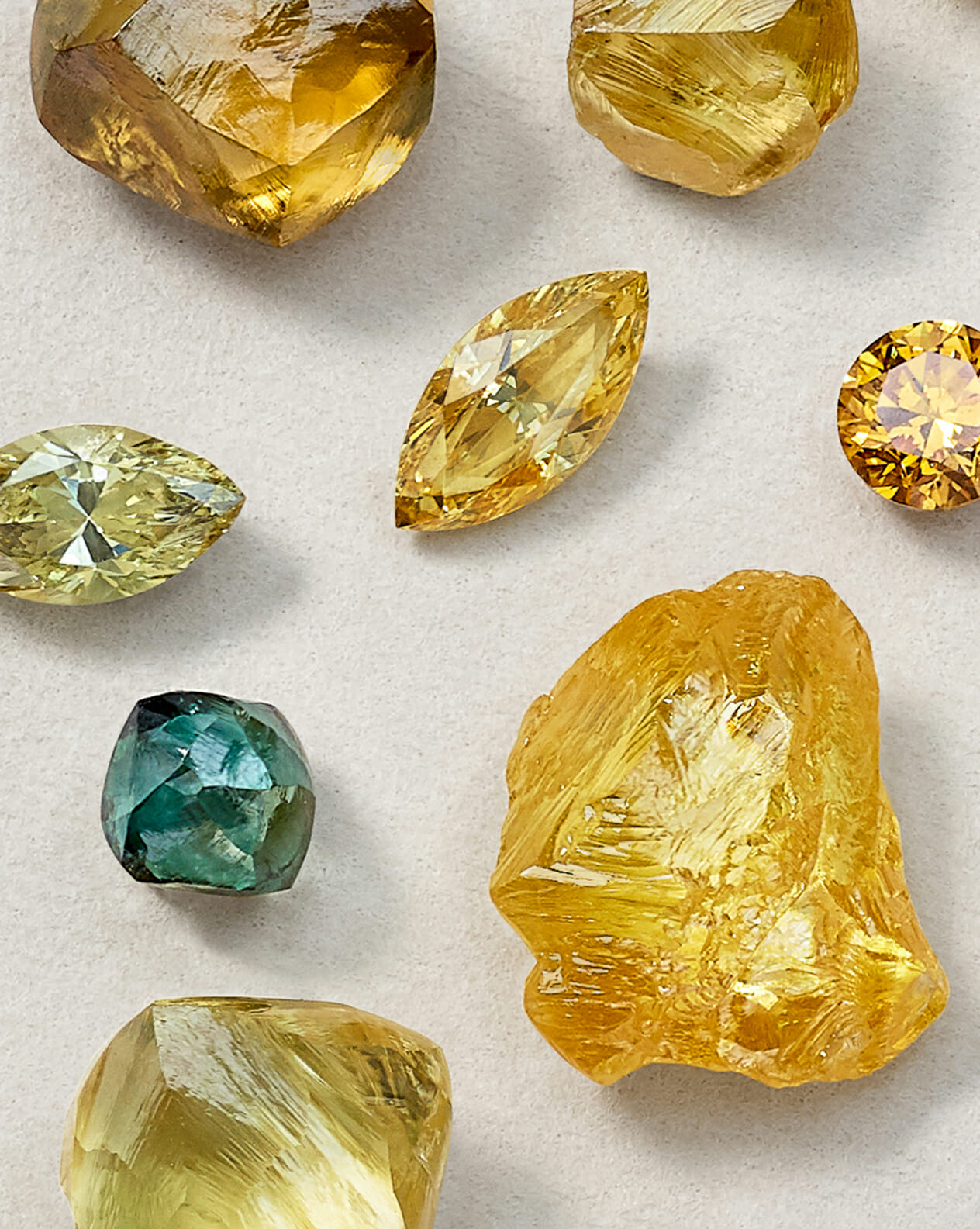When selecting a diamond, color is a key factor that influences both its appearance and value. The diamond color scale plays a crucial role in determining how white or tinted a diamond appears, and understanding this grading system can help you choose a stone that balances beauty and budget. While some diamonds display a crisp, colorless look, others may have subtle warm tones that add character. Ahead, we’ll break down how diamond color is graded, what it means for overall quality, and how to select the best color grade for your needs.
What is the Diamond Color Scale?
The diamond color scale, developed by the Gemological Institute of America (GIA), is the industry standard for evaluating the hue of colorless diamonds. Graded from D to Z, the scale measures how much—or how little—color is present in a diamond. D-grade diamonds are completely colorless and among the rarest and most valuable, while diamonds closer to Z display a noticeable warm tint. The subtle differences between these grades can impact both a diamond’s appearance and price, making color an essential factor to consider when choosing the perfect stone.
The GIA diamond color scale is divided into five categories:
Colorless (D-F)
D: Completely colorless and the most valuable.
E: Nearly colorless, with only microscopic traces of color detectable by experts.
F: Also nearly colorless, with a barely perceptible difference from E.
Best For: Those seeking the highest quality and brilliance, especially when paired with platinum or white gold settings.
Near Colorless (G-J)
G: A slight hint of color, nearly indistinguishable to the naked eye.
H: Slight warmth but still appears white in most lighting.
I: Some noticeable tint in larger diamonds.
J: Slightly more visible color, especially in larger stones.
Best For: Those who want a balance of value and whiteness. Diamonds in this range still appear white when set in jewelry, especially in yellow or rose gold.
Faint Color (K-M)
These diamonds have a noticeable warm tint, often seen as a light yellow or brown hue, and are more affordable compared to higher color grades.
Best For: Buyers who want a larger stone for less money and don’t mind a slight warmth in color.
Very Light Color (N-R)
These diamonds have more obvious yellow or brown tones and have been seen as less desirable for traditional engagement rings.
Best For: Those who prefer a vintage or antique look, where the warmer hues complement older-style settings.
Light Color (S-Z)
These diamonds have more noticeable yellow or brown tones visible to the naked eye and are less commonly used in fine jewelry but may be appreciated for unique designs.
Best For: Those seeking a distinct look with strong color presence.
How Diamond Color Affects Price
The diamond color scale plays a significant role in determining a diamond’s price. Diamonds graded D-F (colorless) are the rarest and most expensive, while those in the G-J (near colorless) range offer a more budget-friendly option without a noticeable difference in most settings.
As you move further down the scale, prices decrease because warm tones become more visible, particularly in larger diamonds and step-cut shapes like emerald and Asscher cuts. However, a well-cut diamond, especially a round brilliant, can reflect light in a way that minimizes the appearance of color—making cut quality just as important as color when selecting a stone.
Choosing the Best Diamond Color for Your Ring
Your choice of diamond color depends on personal preference, budget, and the type of setting you choose. Below are some key factors to consider.

Metal Choice
Platinum & White Gold: Best suited for colorless (D-F) or near-colorless (G-H) diamonds, as they highlight any tint.
Yellow & Rose Gold: Can complement warmer diamond colors (I-M), making them appear whiter by contrast.
Diamond Shape
Brilliant Cuts (Round, Oval, Cushion, Princess): Mask color better due to their superior light reflection.
Step Cuts (Emerald, Asscher): Show color more easily, so a higher color grade is usually preferable.
Diamond Size
Larger diamonds reveal more color than smaller ones. If you’re choosing a stone over 1.5 carats, consider a higher color grade to maintain a white appearance.
Tips for Maximizing Value on the Diamond Color Scale
Opt for Near-Colorless Diamonds (G-J): These offer the best balance of price and visual appeal.
Consider Yellow or Rose Gold Settings: These metals make lower color grades appear whiter.
Prioritize Cut Over Color: A well-cut diamond with a slightly lower color grade is still stunning.
Compare In Different Lighting: Diamonds may look different under natural light versus store lighting. It’s best to shop for diamonds in person to evaluate how they appear up close and in different lighting.
Thinking Beyond the Diamond Color Scale
While the diamond color scale is a useful tool, it’s ultimately a guideline—not a rule. If you find yourself drawn to a warmer diamond with a slight yellow tint, that’s perfectly fine! Many people prefer the charm and character of diamonds in the K-M range, especially when set in yellow or rose gold. These diamonds can offer significant cost savings while still looking beautiful. The most important factor is choosing a diamond that appeals to you personally and fits within your budget, rather than focusing solely on achieving a high color grade.
Diamonds the Color Scale Does Not Apply to
While the GIA diamond color scale is widely used for colorless and near-colorless diamonds, it does not apply to fancy color diamonds. Some diamonds with light yellow or brown hues fall within the traditional D-Z color scale, but only those with enough saturation are classified as fancy color diamonds and graded on a separate scale. These diamonds—found in shades of yellow, pink, blue, green, and even rare reds—are evaluated based on their hue, tone, and saturation rather than the absence of color. Fancy color diamonds are highly prized, with deeper and more vivid colors commanding the highest prices. If you’re considering a colored diamond, focus on choosing the most vibrant shade that appeals to you, as color intensity is the primary factor in value.
Understanding the diamond color scale is key to choosing a stone that meets both your aesthetic preferences and budget. While colorless diamonds are prized for their rarity, near-colorless options can offer exceptional beauty at a better value, especially when paired with the right setting. Ultimately, the best diamond is the one that speaks to you—whether it’s crisp and colorless or has a hint of warmth that enhances its charm.









